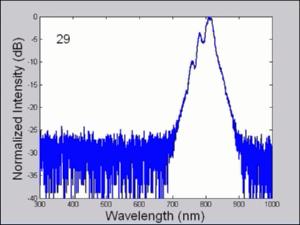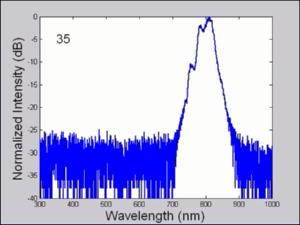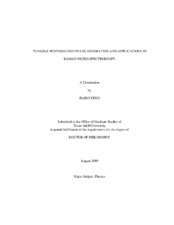| dc.description.abstract | The ability to perceive the dynamics of nature is ultimately limited by the temporal resolution of the instruments available. With the help of the ultrashort optical pulse, people now are able to observe and steer the electronic dynamics on the atomic scale. Meanwhile, high power attainable in such short time scale helps to boost the study of nonlinear physics.
Most commercial femtosecond lasers are based on Ti:sapphire, but such systems can only be tuned in a spectral range around 800 nm. Few applications need only a single wavelength in this spectral region and pulses tunable from the UV to the IR are highly desirable.
Based on the soliton characteristics of ultrashort laser pulses, we are the first ones who propose to make use of resonant dispersive waves, which are phase-matched non-solitonic linear waves, to extend the spectral tuning range of ultrashort laser without involving complicated amplifiers. Experimentally, we achieve the tuning of dispersive wave wavelengths by changing the dispersion parameters of the laser cavity, and confirm dispersive waves are ultrashort pulses under appropriate conditions. We successfully apply such a system into a multi-wavelength operation Ti:sapphire laser. The proposed idea is general, and can be applied to systems where solitons dominate, for example fiber lasers. Thanks to the newly developed novel fiber -photonic crystal fiber- we obtain widely tunable and gap-free femtosecond pulse by extending this mechanism to waveguides. This is the largest reported tuning range for efficient nonlinear optical frequency conversion obtained with such a simple and low energy laser. We apply such a Ti:sapphire laser to Raman micro-spectroscopy. Because of the different temporal behaviors of the Raman process and other parametric processes, we can efficiently separate the coherent Raman signal from the unwanted background, and obtain a high chemical contrast and high resolution image. This high repetition rate and low energy laser oscillator makes it very suitable for biological Raman micro-spectroscopy, especially living samples for which damage is a big concern. | en |




